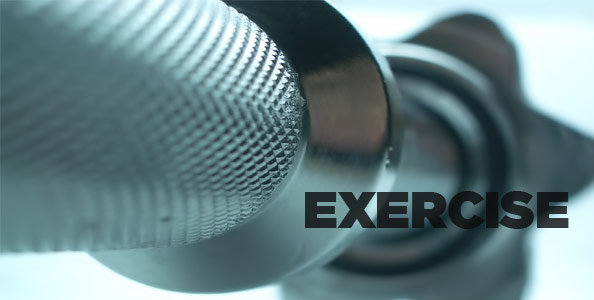
How to modify your workouts (Part I)
Dudes, ever hear your friend say, “Hey Bro! You doing supersets?!”
Ladies ever hear your friend say, “Hey, have you tried HIIT!? I hear it burns hella fat!”
I’m not saying that every guy or girl talks like a stereotypical cheerleader or dude-bro, but you catch my drift. So, what’s High Intensity Interval Training? What’s a Superset? A Dropset? Rest/Pauses?
If you’re nodding your head, with no idea what these are, you’re not alone. People throw these names around the gym like they’re a magic pill that will cure all your ails. These things are great ways to take stagnant workouts and modify them, but these should come after your fundamentals are in firm grasp, it should NOT be your go to. Here are the four bread and butter modifications you’ll want to try first.
High Intensity Interval Training:
This is when you change things up, from moving at a moderate pace, to a high intensity, for short bursts of time. For some people, they love doing slow cardio for long periods of time. A marathon would be an example of slow cardio. Since not everyone wants to spend that much time, or monotonously drudge through that much slow burning effort, you might want to change things up by increasing your intensity, and taking short breaks in between. What does this look like?
Example: Wind Sprints. Instead of going at an 8/20 pace on your elliptical for an hour, take 20 minutes, and crank that baby up to a level 15/20 for 60 seconds, and take a 20-30 second jog at 4/20 or 5/20. Do that for a full 20 minutes, and you’ll see what I mean.
Supersets:
When you take two exercises, and do them back to back with no, or limited, time in between (We’ll say 15 seconds or less). You’ll take your break after finishing both sets. In this way, your workouts tend to take less time, and your intensity level can be higher. People tend to superset two workouts of opposing movements.’
Example: 12 reps of Rope Tricep Pushdowns followed by 12 reps of Wide Grip Cable Curls.
Dropsets:
When you take an exercise, do a set to failure, and without a rest, drop the weight to something more manageable and immediately, with no rest, do another set to failure. You can do one drop set or up to as many as you want.
Example: 10 reps of Leg Press at 450 lbs, followed by 10 reps of Leg Press at 360 lbs, followed by 10 reps of Leg Press at 270 lbs. All of this would be done with no break in between. A partner, in dropsets, is helpful.
Rest/Pauses:
This is when you take a nap in the middle of a rep… Of course it’s not, napping during a workout is forbidden!
Rest/Pauses involve modifying an individual repetition so that you hold the rep at the maximal point of stretch of the muscle, in order to increase the intensity of the rep. An example of this would be:
Example: Bench Pressing 135 lbs. You would bring the weight down to one inch above your chest, with your chest expanded for a full stretch, avoiding the use of your delts(shoulders) you would hold it there for an extra two or three count, keeping your elbows 90 degrees to your torso. In this movement, it is VERY important to have strict form, otherwise the usefulness of this tool is negated.
Pyramids:
These are used as an attempt to work the different types of muscle fibers in your muscle, from the fast twitch, to the slow twitch muscle fibers. What this type of set structure does, is give you the high # of reps first 15 reps, and works you on down to 4 reps (Anything under 4, and you’re probably not going to have great form).
Example: Bicep Curls
Set #1: 15 reps,
Set #2: 12 reps,
Set #3: 8 reps,
Set #4: 6 reps,
Set #5: 4 reps
With that, I hope that you can turn your stagnant workouts into a more interesting and challenging endeavor. If you’re looking for more ideas, check out the other article for a list of four more advanced techniques. As always, we’re rooting for you as you work toward your goals!
Posted By Josh | Comments 0 | Add Comment |